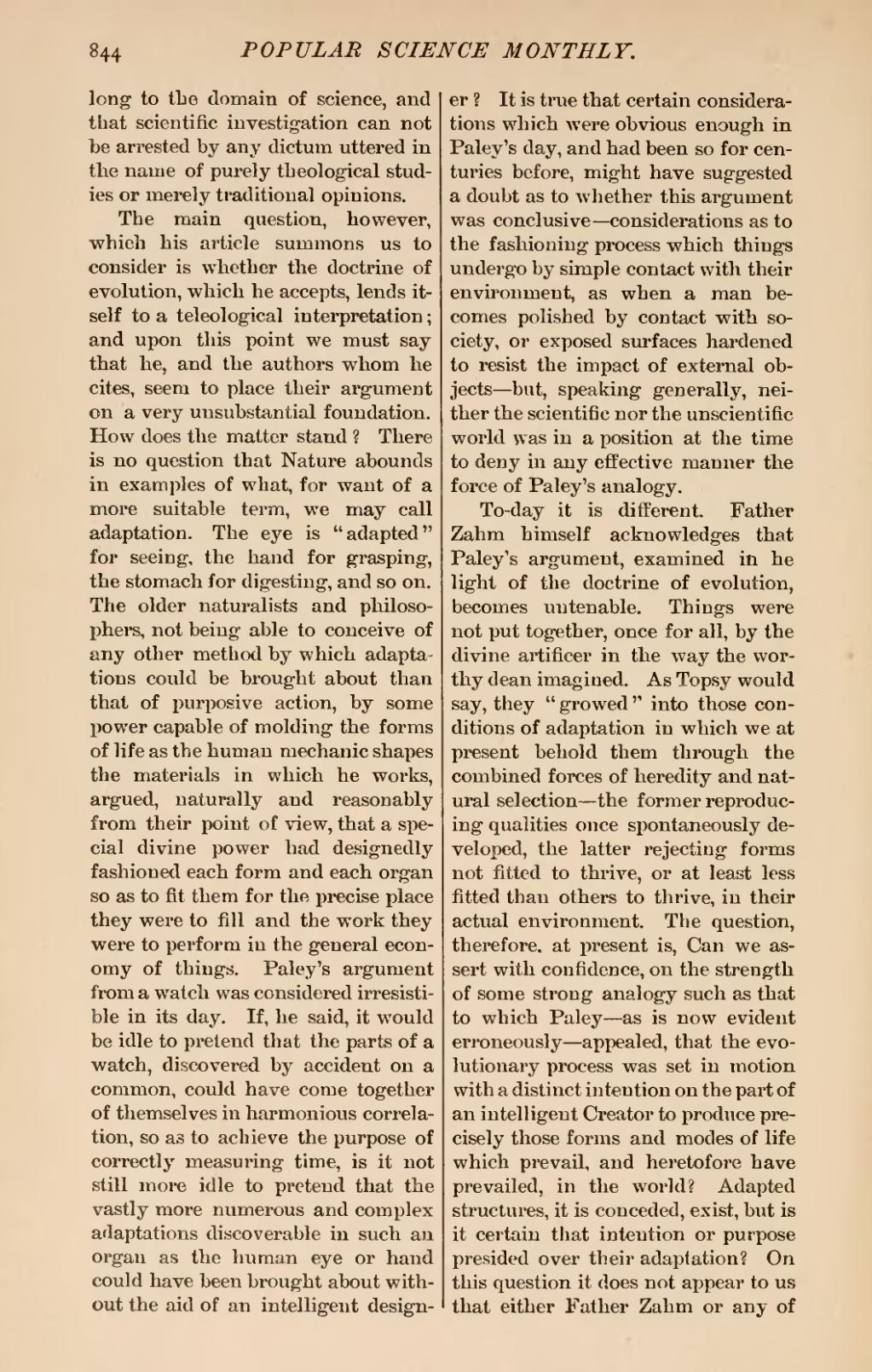long to the domain of science, and that scientific investigation can not be arrested by any dictum uttered in the name of purely theological studies or merely traditional opinions.
The main question, however, which his article summons us to consider is whether the doctrine of evolution, which he accepts, lends itself to a teleological interpretation; and upon this point we must say that he, and the authors whom he cites, seem to place their argument on a very unsubstantial foundation. How does the matter stand? There is no question that Nature abounds in examples of what, for want of a more suitable term, we may call adaptation. The eye is "adapted" for seeing, the hand for grasping, the stomach for digesting, and so on. The older naturalists and philosophers, not being able to conceive of any other method by which adaptations could be brought about than that of purposive action, by some power capable of molding the forms of life as the human mechanic shapes the materials in which he works, argued, naturally and reasonably from their point of view, that a special divine power had designedly fashioned each form and each organ so as to fit them for the precise place they were to fill and the work they were to perform in the general economy of things. Paley's argument from a watch was considered irresistible in its day. If, he said, it would be idle to pretend that the parts of a watch, discovered by accident on a common, could have come together of themselves in harmonious correlation, so as to achieve the purpose of correctly measuring time, is it not still more idle to pretend that the vastly more numerous and complex adaptations discoverable in such an organ as the human eye or hand could have been brought about without the aid of an intelligent designer? It is true that certain considerations which were obvious enough in Paley's day, and had been so for centuries before, might have suggested a doubt as to whether this argument was conclusive—considerations as to the fashioning process which things undergo by simple contact with their environment, as when a man becomes polished by contact with society, or exposed surfaces hardened to resist the impact of external objects—but, speaking generally, neither the scientific nor the unscientific world was in a position at the time to deny in any effective manner the force of Paley's analogy.
To-day it is different. Father Zahm himself acknowledges that Paley's argument, examined in he light of the doctrine of evolution, becomes untenable. Things were not put together, once for all, by the divine artificer in the way the worthy dean imagined. As Topsy would say, they "growed" into those conditions of adaptation in which we at present behold them through the combined forces of heredity and natural selection—the former reproducing qualities once spontaneously developed, the latter rejecting forms not fitted to thrive, or at least less fitted than others to thrive, in their actual environment. The question, therefore, at present is, Can we assert with confidence, on the strength of some strong analogy such as that to which Paley—as is now evident erroneously—appealed, that the evolutionary process was set in motion with a distinct intention on the part of an intelligent Creator to produce precisely those forms and modes of life which prevail, and heretofore have prevailed, in the world? Adapted structures, it is conceded, exist, but is it certain that intention or purpose presided over their adaptation? On this question it does not appear to us that either Father Zahm or any of
